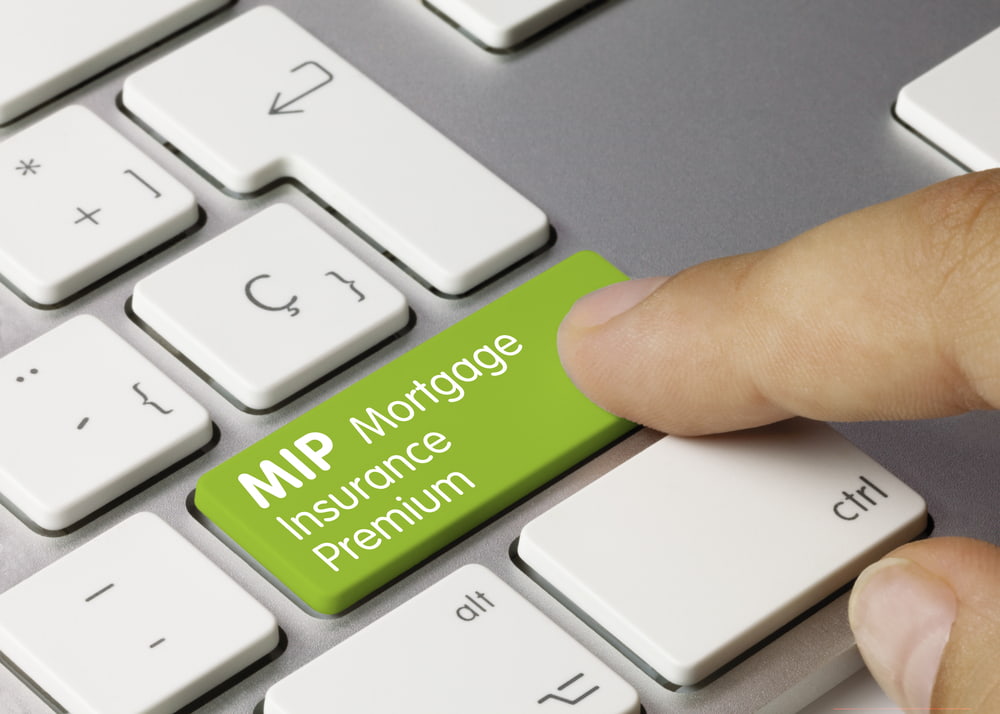Mortgage insurance is a powerful tool that enables people to become homeowners even with a minimal down payment. This insurance will pay for your mortgage in the event of a default. It doesn’t protect you – your credit will still suffer, and you can still be evicted. But since the lender knows they’re guaranteed to get paid, they’re less concerned about your credit rating or the amount of your down payment.
But like any insurance, mortgage insurance comes with a premium. In the case of a mortgage insurance premium (MIP), it’s an extra fee you pay each month on top of your regular mortgage payment. So, how does this work, and what does it mean for you as a homebuyer? Here’s what you need to know.
What Is Mortgage Insurance Premium (MIP)?
MIP is a fee that’s attached to mortgages that are backed by the Federal Housing Administration (FHA). Because FHA loans tend to go to higher-risk borrowers, mortgage insurance provides a measure of protection. FHA-backed lenders are protected from loss, which is why the FHA requires all borrowers to take out mortgage insurance.
Mortgage insurance premiums used to be deductible, just like mortgage interest. However, the 2017 Tax Cut and Jobs Act eliminated this deduction. A later act passed in 2020 allowed MIP deductions during that tax year and retroactively for the 2018 and 2019 tax years. For now, MIP remains non-deductible.
[ Thinking about investing in real estate? Register to attend a FREE online real estate class and learn how to get started investing in real estate. ]

How Does Mortgage Insurance Premium Work?
FHA-backed loans carry higher inherent risks than traditional mortgage loans. Borrowers may have a FICO score as low as 580 and may be making a down payment of as little as 3.5%, so default is a real risk.
For this reason, all FHA mortgage borrowers must obtain mortgage insurance. This insurance requires two premiums: an upfront fee of 1.75% of the loan value and an additional annual premium. Depending on the mortgage, this can range from 0.45% to 1.05% of the loan. The upfront fee is always due at closing. The cost of the annual fee will depend on the loan value, the loan-to-value ratio, and the loan term.
Instead of the annual fee being charged once a year, it’s divided into 12 monthly payments. These payments are then combined with the mortgage payment in the same monthly bill. Mortgage bills will also include property tax escrow and homeowners insurance fees.
By comparison, traditional mortgages use a different insurance called private mortgage insurance (PMI). PMI is optional on most mortgages, which allows homebuyers to save money. PMI is required if the down payment is less than 20% of the purchase price. Once you’ve acquired 20% equity in the home, you’ll be allowed to cancel the coverage.
Qualified MIP Tax Implications
As we already discussed, the 2017 Tax Cuts and Jobs Act eliminated the MIP tax deduction. And while it was resurrected from 2018 to 2020, there’s no indication that it will come back. As a result, there are currently no tax implications for mortgage insurance premiums; it’s ordinary taxable income. That said, here’s how you would take the deduction if it became available again.
First, you’ll receive Form 1098 Mortgage and Interest Statement from your lender. This form shows your total mortgage payments, interest payments, and other payment details. To find how much you’ve paid in MIP or PMI, look at the number in Box 5. If you’re itemizing your deductions, you’ll be able to deduct that amount. It goes in the same section as mortgage interest on Schedule A.
What’s The Difference Between PMI & MIP?
MIP and PMI are different types of insurance. PMI is for conventional mortgages, while MIP is specific to FHA-backed mortgages. Let’s discuss the other differences between these two types of mortgage insurance.
Cancelling
Cancellation works entirely differently for PMI and MIP. In general, PMI is much more flexible. Once you own 20% equity in your property, you’re free to drop your coverage. When you reach 22% equity, the insurance will automatically be canceled, and you’ll see a drop in your monthly bill.
When it comes to MIP, things are a little bit more complicated. If your down payment was less than 10%, there’s no way to cancel your coverage, and you’ll pay for MIP for the duration of your mortgage.
However, if your down payment was 10% or more, you’ll only have to pay MIP for 11 years, and at that point, it will automatically be dropped.
That said, there’s another way to cancel MIP early. Once you reach 20% equity, you can simply refinance with a traditional loan.
Upfront Cost
MIP comes in two forms: your annual premium and the upfront premium. The upfront premium costs 1.75% of the loan value, which makes it a significant investment.
PMI, however, does not typically come with any upfront costs, and all you pay is the annual premium, which is split across your 12 monthly payments.
That said, some private mortgage insurers offer an option to pay the entire premium at closing. In that situation, your closing costs will be significantly higher. But there won’t be any annual premiums, so your monthly payments will be reduced.
Annual Costs
The annual cost of MIP ranges from 0.45% to 1.05% of the loan value. The cost is based on three factors: the duration of the loan, the loan amount, and the down payment. The longer the term and the lower the down payment, the higher the percentage will be. Expensive loans also cost more to insure because they represent a greater potential loss.
PMI rates, however, are based on the down payment and your credit score. Even if your down payment is low, a clean credit record can net you a reasonable premium. Rates range from 0.1% to 2% per year.

Pros Of Mortgage Insurance Premium
Even with the cost of MIP, FHA loans represent an excellent option for many borrowers. Here are some benefits of paying an MIP:
-
Down payments as low as 3.5%. Admittedly, you can make a 3% down payment on a conventional loan, but the credit requirements are much tighter. FHA loans make low down payment loans more accessible.
-
Great for people with low credit or low income. FHA loans are much easier to qualify for than traditional loans. They’re also a great option for first-time homebuyers who have no existing home equity to put toward a down payment.
-
Can be cheaper than a private mortgage. Even if you qualify for a conventional loan with PMI, it’s still worth comparing the costs to an FHA-backed loan. If your credit score is only marginal, it may turn out that your costs for PMI are higher than what you’d pay for MIP.
Cons Of Mortgage Insurance Premium
We’ve talked about the upsides of MIP. What are some of the downsides? Here are a couple of good reasons to stick with a conventional mortgage and insurance:
-
You pay an upfront fee. A 1.75% upfront fee is no joke. On a $300,000 home, that’s an extra charge of $5,250 due at closing.
-
It’s difficult to cancel. Unless you make at least a 10% down payment, MIP will be required for the duration of the loan. The only way out is to refinance with a conventional loan after you’ve acquired 20% equity in the property.
Can You Cancel Qualified Mortgage Insurance?
A conventional loan allows you to cancel PMI once you own 20% equity in the home or after you’ve made 11 years of regular payments. With an FHA loan, it becomes more difficult.
We’ve already outlined the challenges of canceling MIP. If your down payment was less than 10% of the home value, you’d be stuck with MIP for the life of the loan. Unless you can afford to refinance with a non-FHA loan, you’ll have no choice but to keep paying.
That said, there’s one other way out. If your loan originated between December 31, 2000, and July 3, 2013, you can cancel your MIP as long as you own at least 78% equity in your home. So if you got your loan during this period, it’s worth trying to cancel.
The 10% threshold is important for borrowers considering a conventional versus an FHA loan. The conventional loan is almost always a better deal if you intend to pay less than 10% in a down payment. Unless the PMI costs are truly outrageous, being stuck with MIP for the loan term is just too much of a drawback.
Then again, borrowers who intend to pay 10% or more should consider both conventional and FHA loans. Depending on your credit rating and other factors, either one could be a better value.
Summary
A mortgage insurance premium is part of the cost of financing an FHA-backed mortgage. It opens up the world of homeownership for people who might otherwise not be able to afford their own homes. And it provides lenders with the reassurance that they won’t lose money on their investment.
Ready to start taking advantage of the current opportunities in the real estate market?
Click the banner below to take a 90-minute online training class and get started learning how to invest in today’s real estate market!


